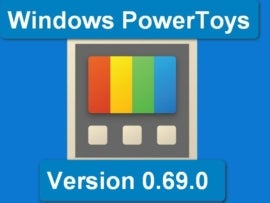
Image: CNET
The new Microsoft Edge is based on Chromium, so it supports more add-ons and extensions than the older version. If you’re using Edge to navigate the web, you can take advantage of a variety of add-ons to improve and enhance your browsing experience.
Microsoft released the new version of Edge on January 15, 2020 for Windows 10, Windows 8/8.1, and Windows 7, so you should already have it by now; if not, browse to Microsoft’s website to download the new Microsoft Edge based on Chromium. Click the button to Get The New Microsoft Edge Now. In Windows 10, the new version of Edge will automatically replace the old legacy version. Open Edge from the Desktop or Taskbar.
SEE: How to protect against 10 common browser threats (free PDF) (TechRepublic)
How to install Edge add-ons
-
- To find an add-on, open the Microsoft Edge add-ons page, and browse for add-ons by category or search for specific add-ons by name or other criteria (Figure A).
Figure A

- When you find an add-on you like, select it, and click the Get button.
- Click the button to Add Extension (Figure B). An icon for the extension that allows you to control it should appear on the toolbar. If you ever wish to remove the add-on, right-click its toolbar icon, and select the command to Remove From Microsoft Edge.
Figure B

Now let’s look at some specific add-ons.
SEE: The Internet of Wild Things: Technology and the battle against biodiversity loss and climate change (TechRepublic)
How to copy and paste with the Clipboard History add-on for Edge
If you often copy and paste text, links, and other items on the web, the Clipboard History add-on is handy to use as a clipboard manager.
- After you install this add-on, select and copy text and links that you want to paste elsewhere. Notice that the counter on the Clipboard History toolbar icon goes up each time you copy another item.
- Click the toolbar icon to see a list of all the copied items.
- To paste a copied item in a text field or box on a website, right-click, move to the entry for Clipboard History Pro, and select the item you wish to paste (Figure C).
Figure C

You can export your copied items to paste them outside of the browser. Click the toolbar icon, check the item or items you want to paste, and click the Export button. You can export the items into a JSON (JavaScript Object Notation) file, a text file, or a CSV file (Figure D).
Figure D

How to use the Custom Right-Click Menu add-on for Edge
With the Custom Right-Click Menu add-on, you can add specific websites and other links to Edge’s right-click menu.
-
- After you install this add-on, right-click anywhere on a browser page, move to the entry for Custom Right-Click Menu | Custom Menu, and select the command for Options. A webpage appears where you can customize the menu by enabling specific options, adding links to websites and search engines, and launching local applications.
- Click the Add button next to the item you wish to add to the menu (Figure E).
Figure E

- Right-click anywhere on a page, move to the entry for Custom Right-Click Menu | Custom Menu, and select the site or search engine you wish to open (Figure F).
Figure F

How to translate text with the Edge Translate add-on
Microsoft Edge comes with its own built-in translator that will automatically offer to translate a webpage to a different language. But in some cases, you may just want to translate specific text on a page; you can do that with Edge Translate.
- Click the Edge Translate icon on the toolbar, then click the down arrow and set your source and target languages.
- Select and copy the text you want translated, and paste it into the text field that displays the names of source and target languages.
- Click the Translate button, and the translated text appears in a sidebar on the right (Figure G).
Figure G

How to use the IP Address and Domain Information add-on for Edge
The Microsoft Edge add-on IP Address and Domain Information can help you find domain registration information for a specific website, either to confirm that the site is legitimate or just to record the data.
- Click the toolbar icon for IP Address and Domain Information. You’ll find information such as the IP address, physical location, subnet range, SPAM and blocklist database status, Whois details, ISP, and domain name details. Another section shows your own external IP address and other network information.
- From the tool, enter the name of a specific website or provider to get details on that site (Figure H).
Figure H

How to use the Strong Password Generator add-on for Edge
Security experts recommend using a strong and complex password to secure your website logins and accounts. In most cases, your best bet is to use a password manager, which can not only generate but also store and apply complex passwords. If you don’t use a password manager, an add-on like Strong Password Generator can be of service.
- To create a strong password, click the add-on’s toolbar icon.
- From the menu, specify the required length of the password and whether to incorporate numbers, lowercase characters, uppercase characters, and special characters.
- Click the Refresh icon to generate a password.
- If you’re happy with the password, click the Copy button. You can paste the new password into the appropriate field on the website (Figure I).
Figure I







